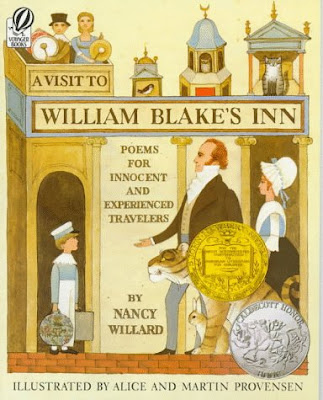
(blogging about another old favorite, as I’m still in the middle of reading Silverlock and am majorly swamped, hay…)
When I was in 4th grade, my dad usually picked me up after work so I had a few hours to kill while waiting. I usually read books if I didn’t have any homework to work on, or if I didn’t feel like doing it, which was more often the case.
Now in those days, we decorated the room with special corners for each subject — Christian Doctrine, Science, Math, Social Studies, etc. Of course, my favorite corner was the Reading Corner, where everyone brought a book or two to share with the class and we would have a mini-library to escape to in between classes or during DEAR (Drop Everything And Read) time, so we wouldn’t get listed down as “noisy girls”. Haha, magically by the end of the school year the books would have dwindled to a couple mo.tley ones; I lost a lot of books to the Reading Corner, although I gained some other kids’ books too, wink, wink.
One of the books I discovered in our 4th grade reading corner is the 1947 Newbery Award winner The Twenty-One Balloons by William Pene du Bois, which I first read while waiting to get picked up from school one rainy afternoon at Gate 1.
The Twenty-One Balloons one of the best escapist stories I have ever had the pleasure of reading, and I’ve lost count of how many times I’ve read it and how many copies I’ve worn out and lost (e.g. loaned and never returned to me! grr).
I really love the premise: Professor William Waterman Sherman decides to retire from teaching arithmetic to grubby kids, and decides to fly off on a grand vacation — drifting aimlessly on a hot-air balloon! I loved the detailed description of how The Globe (Prof. Sherman’s hot air balloon) was constructed — a small wicker house with an observation deck, and everything made from the lightest materials — even a small library of paper-bound books in tiny print!
Professor Sherman left San Francisco intending to fly across the Pacific Ocean, and three weeks later, he mysteriously turns up floating in the Atlantic Ocean, in a wooden wreckage with 21 balloons!
Where exactly has he been? On the island of Krakatoa (he flies over the Philippines!), which turns out to be an extremely wealthy island-nation of eccentric citizens!

The Diamond Mines
I love the idea of Krakatoa in The Twenty-One Balloons, and this book has made me daydream about living there, and given the choice, I’d drop everything and go. The island has an expansive diamond mine right under the volcano Krakatoa. According to Krakatoan history (as narrated by Mr. F), a sailor got shipwrecked on the island and discovered its treasures. As soon as he was able to return to America, he handpicked 20 families of diverse talents and interests. Each family was renamed with a letter of the alphabet, e.g. Mr. A, Mr. B, A-1, and A-2 and so on until the Ts, and the small nation lives a leisurely life financed by discreetly selling a small load of diamonds each year.

The Coat of Arms of Krakatoa: “Not New Things, but New Ways”
What’s most interesting about Krakatoa is its “Gourmet Government.” Each day of their 20-day calendar (A through T) is assigned to a specific family, who is tasked to serve meals at their house, which functions as a restaurant specializing in a particular cuisine — A for American, B for British, C for Chinese, D for Dutch, etc. It’s a lot of fun, as each house resembles the architecture of the country too — from an Egyptian pyramid to a Russian tea house to an Italian Bistro and a miniature Versailles! — and the families are very competitive in coming up with great dining experiences for one another, and they have theme months too, like “Month of Lamb,” depending on their surplus stock. I imagine every day to be a gastronomic adventure!
There are also a lot of imaginative Krakatoan inventions in the book, including a bed that automatically changes sheets, a collapsible dining room, living room bumpcars, sky beds, and flying merry-go-rounds. William Pene du Bois is not only a gifted writer, he illustrated the book as well, and the illustrations are great fuel for the imagination.

M-1 and M-2’s Sky beds
Of course, you will have to read the book to find out how Professor Sherman ends up in the wrong ocean with 21 balloons. It’s a great book for all ages; kids and adults alike will appreciate the rich experience that Pene du Bois lays out for the reader.
Interesting factoid: the story came out around the same time as F. Scott Fitzgerald’s “A Diamond as Big as the Ritz” in 1947, which has a similar plot although very different ideas. William Pene du Bois writes a horrified note as an introduction and quips,”The fact that F. Scott Fitzgerald and I apparently would spend our billions in like ways right down to being dumped from bed into a bathtub is altogether, quite frankly, beyond my explanation.”
***
My copy: trade paperback. Looking for a hardcover copy!
My rating: 5/5 stars












